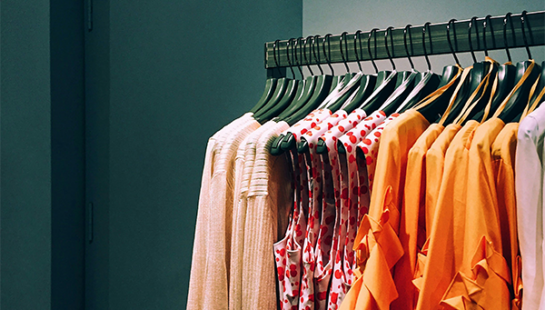Is A World Without Garbage Possible?
We’re all comfortable using a garbage bin. It’s a normal part of life, right? We buy things—clothes, furniture, electronics—then throw them away at the earliest sign of wear and tear. Those pants with the missing button? Binned. Toaster with a loose lever? It’s cheaper to buy something new than get it fixed, so into the bin it goes.
The problem is the earth doesn’t have endless resources for us to throw on a landfill pile. We’re using resources equivalent to 1.6 planet earths each year.* This is called our ecological footprint. Essentially, it means we’re taking more from the earth than it can regenerate. With our global population tipped to grow by two billion people in the next thirty years, our current consumption cannot sustain this growth.
But what if there’s a different way of doing things, where ‘garbage’ no longer exists?
Introducing The Circular Economy
If you aren’t familiar with this term, the circular economy aims to stop waste from being produced in the first place and uses what we already have to create new products. This means changing the way products are designed, rethinking the way we use them, and changing what we do with them when they’re no longer needed.
To eliminate waste, we want to keep products in use, in their original form, for as long as possible. Clothing should be durable, long lasting and well cared for so we can wear them for many years, not just one season.
Unfortunately, not all products are equal. Most sneakers, for example, are made of several different materials glued together. This means they’re hard to recycle, because it’s difficult to separate the different parts.
Seeing ‘Garbage’ As Valuable
Moving to a circular fashion economy also means changing the materials we use to make clothes, and what happens to them when we’re ready to part with them. Worn out clothes can be turned into new materials so what we’ve historically considered ‘garbage’ becomes valuable. This can happen biologically, when an item breaks down as food for the environment (for example, crops, trees and produce), or mechanically, when materials are turned into man-made fibres such as melting plastic bottles down for nylon for swimwear.
Supporting sustainable processes and farming practices which mirror nature is also an important tenet of the circular economy. This means enabling soils to recover nutrient levels instead of degrading them, letting natural materials breakdown and return to the earth, and increasing biodiversity. Remember, waste doesn’t exist in nature. It’s a human design.

Why Do We Need Circular Fashion?
Currently, less than one percent of used fashion items are recycled back into the value chain. The other 99 percent represents a huge opportunity for business, people, and the environment. In addition to relieving pressure on finite resources, moving to a circular economy can help the fashion industry reduce its greenhouse gas contribution, which currently accounts for up to 10 percent of global emissions. The Ellen Macarthur Foundation estimates that increased clothing collection and recycling could abate 18 million tonnes of emissions annually, whilst circular business models such as rental and repair services could reduce greenhouse emissions by a further 143 million tonnes by 2030.
I’m In! How Do We Make It Happen?
Everyone has a part to play: local councils, governments, infrastructure providers, investors, brand leaders and especially individuals like you.
Currently, the circular economy is in its early stages. But the burgeoning demand is seeing new solution providers emerge, such as textile collection and recycling services.
Leaders of fashion brands must urgently focus on implementing circular design, including features like durability, repairability, disassembly, recyclability, and biodegradability. They must also invest in systems supporting the shift, such as resale platforms, repair services, and providing somewhere to drop off your clothes for recycling when they’re worn out.
Participating in the circular economy means shifting our mindset from disposable and fast fashion towards clothing that will serve us through many years.
Being able to recycle something doesn’t give us permission to use and abuse items then throw them away, sans guilt.
How Can I Extend The Lifecycle Of My Clothes?
As consumers, we must adopt a stewardship mindset. If we have the privilege of buying and owning, well, anything, we are then responsible for those items we possess. That means we must do all we can to steward them responsibly throughout their lifecycles. Here’s how:
Support resale and rental.
Do you really need to buy that new dress for the wedding, or could you rent it or purchase second-hand? Only wearing clothes once is a waste of the resources that went into making them.
WHEN SHOPPING, CHOOSING MATERIALS THAT ENCOURAGE A CIRCULAR ECONOMY
This means choosing recycled over virgin polyester or nylon where possible, and single content fibres over blends. It also means choosing materials produced in more responsible ways. Check out our Fibre Guide for better options.
Keep your clothes in circulation for longer–repair and resell if possible.
Keeping clothes in use for longer not only saves your wallet but reduces greenhouse gas emissions. Just because your shirt has lost a button, or the elastic in your pants has lost its stretch, doesn’t mean their wearable life is over. Repairing clothes is a great skill to learn.
Dispose of well-loved clothes responsibly.
You have control over where discarded clothing goes. Instead of throwing it away, you could resell it or donate to a local charity store if it’s still in good quality. If it’s no longer wearable, you could turn it into something new (think craft projects or turning old socks into cleaning cloths) or donate it to a textile recycling service.
We all want to do better for our planet. Although we play a small piece in the puzzle, we can each make big changes that will help shift our society to a more sustainable future.
*Global Footprint Network, 2021.
This post was first published in 2022.



 Katherine Halliday,
Katherine Halliday,

 Glyn Rhys Stamnas
Glyn Rhys Stamnas